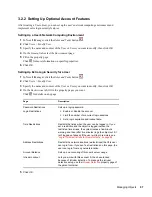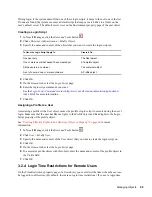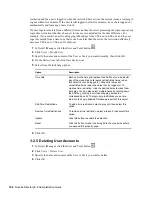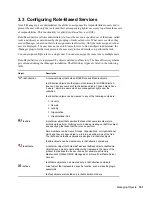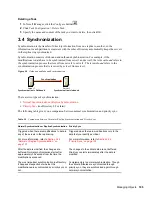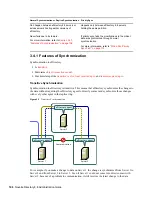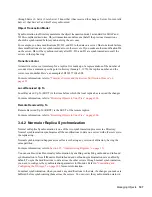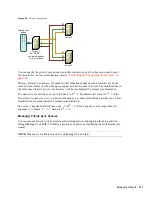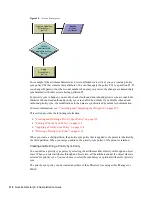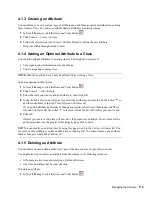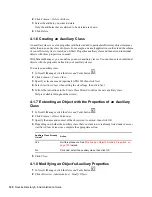
110
Novell eDirectory 8.8 Administration Guide
no
vd
ocx
(e
n)
6 Ap
ril 20
07
For example, a user has the following attributes: Income, Employee No, Address, and Cube No. You
identify Income and Address as critical attributes. Employee No and Cube No are modified but these
modifications are not yet synchronized. When the modifications to Income and Address are
synchronized through priority sync, Employee No and Cube No also get synchronized, though they
are not identified as critical data.
This section provides you the following information:
“Enabling and Disabling Inbound and Outbound Priority Sync” on page 110
“Priority Sync Threads” on page 110
“Priority Sync Queue Size” on page 110
“Managing Priority Sync Policies” on page 111
“When Can Priority Sync Fail?” on page 115
Enabling and Disabling Inbound and Outbound Priority Sync
You can enable or disable the inbound and outbound priority sync in eDirectory 8.8 or later using
iMonitor. Refer to
“Controlling and Configuring the DS Agent” on page 202
for more information.
Inbound priority sync is enabled by default. By disabling the inbound priority sync on a server, the
modifications to the critical data on other servers are not synchronized with this server through
priority sync. However, the modifications are synchronized by the normal synchronization process.
Outbound priority sync is enabled by default. By disabling this option on a server, the modifications
to the critical data on this server are not synchronized with other servers through priority sync.
However, the modifications are synchronized by the normal synchronization process.
Priority Sync Threads
You need to configure the number of threads to be used for outbound priority sync. In iMonitor, you
can specify the number of priority sync threads using
Agent Configuration
under
Agent
Synchronization
. For more information, refer to
“Controlling and Configuring the DS Agent” on
page 202
. The supported values are 1 to 32; default is 4.
Priority Sync Queue Size
This indicates the maximum number of modified critical entries the queue can hold before
synchronizing them. As soon as you modify the critical entries, they go into the priority sync queue
and are synchronized one after the other. For example, if D1, D2, and D3 are the critical entries that
are modified on server1 and these entries have to be synchronized across server2 and server3
through priority sync, then D1 is first synchronized with server2 and server3. Then D2 is
synchronized with server2 and server3, and later D3 is synchronized with server2 and server3. If an
earlier entry in the queue is not successfully synchronized with one of the servers, it does not affect
the synchronization of the rest of the entries.
Summary of Contents for EDIRECTORY 8.8 SP2
Page 4: ...novdocx en 6 April 2007...
Page 116: ...116 Novell eDirectory 8 8 Administration Guide novdocx en 6 April 2007...
Page 128: ...128 Novell eDirectory 8 8 Administration Guide novdocx en 6 April 2007...
Page 255: ...256 Novell eDirectory 8 8 Administration Guide novdocx en 6 April 2007...
Page 406: ...408 Novell eDirectory 8 8 Administration Guide novdocx en 6 April 2007...
Page 563: ...566 Novell eDirectory 8 8 Administration Guide novdocx en 6 April 2007...
Page 573: ...576 Novell eDirectory 8 8 Administration Guide novdocx en 6 April 2007...
Page 601: ...604 Novell eDirectory 8 8 Administration Guide novdocx en 6 April 2007...


